Breast Implant
Breast Implant
- What are Breast Implants?
- What are the Pros and Cons of Breast Implant Surgery?
- Types of Breast Implants: Choosing the Right One
- How Much Are Breast Implants?
- How Do You Prepare for Breast Implant Surgery?
- What Happens During Breast Implant Surgery?
- Where will your Breast Implants be Placed?
- How is Breast Implant Recovery?
- How Soon will You See Breast Implant Results?
- How Long Do Breast Implants Last?
- Are Breast Implants Safe? What are the Health Risks?
- Do Breast Implants Cause Cancer?
- Can You Breastfeed with Implants?
- What are the Alternatives to Breast Implants?
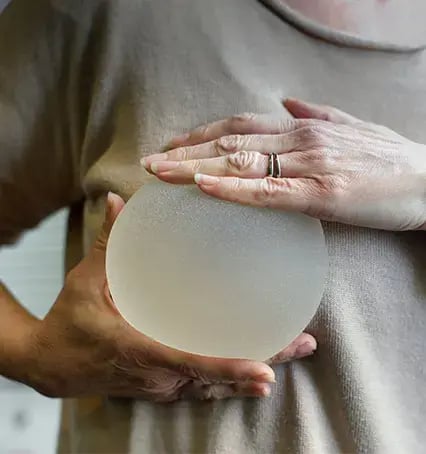
&Quick Facts
-
Satisfaction 94%
-
 Reviews -
Reviews - -
 Average Cost $ 4000
Average Cost $ 4000 -
 Related Doctors 2
Related Doctors 2 -
 Treatment General Anesthesia
Treatment General Anesthesia -
 Recovery Time 2-3 Weeks
Recovery Time 2-3 Weeks -
 Question&Answer -
Question&Answer -

It is the result of breast implant performed by Hakan Ocsel, MD. For reference purposes only, results may vary.
&Doctors
Most Active Doctors on NewMe
&Real Reviews
Most Popular Reviews
&Real Reviews
Real Reviews Q&A



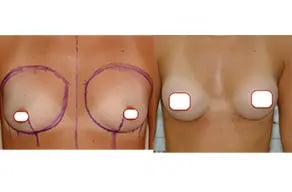
&All About Breast Implant
&All About Breast Augmentation
What are Breast Implants?
Breast implants are devices used to enhance the size and shape of breasts. They can be filled with saline or silicone gel. They are also used in breast reconstruction after mastectomy or lumpectomy. American doctors Thomas Cronin and Frank Gerow created the first silicone implants in 1961. The first woman to get these implants was Timmie Jean Lindsey in 1962.
While popular, breast implants have faced controversy due to health concerns. In 2017, the FDA linked textured implants to a rare lymphoma called BIA-ALCL. Despite this, implant technology has improved, offering more natural-looking and safer options in various sizes and shapes.
What are the Pros and Cons of Breast Implant Surgery?
Pros:
- Breast implants can make breasts larger, fuller, and more balanced.
- They can correct tuberous breasts or reconstruct breasts after a mastectomy.
- Implant size and shape can be customized for a natural look.
- The surgery has a high satisfaction rate, with 95% of women saying it's worth it.
- Many women feel more confident after getting implants.
Cons:
- There are safety concerns, and the FDA has issued warnings about risks.
- Complications like implant rupture, leakage, asymmetry, and capsular contracture may occur, sometimes needing revision surgery.
- Implants don't last a lifetime and will need to be replaced eventually. Regular check-ups are necessary.
Our mission is to create a world where every investment in modern beauty is Worth It.
Let's keep in touch
Get updates of the treatments you are interested
Types of Breast Implants: Choosing the Right One
During your consultation, your plastic surgeon will help you pick the right implant size and shape for your desired outcome. They’ll also explain the risks and benefits of different types of implants.
Silicone vs. Saline:1. Silicone Implants:
- Made with a silicone shell and interior.
- Highly cohesive silicone or "gummy bear" implants hold their shape better.
- Mimic the natural feel of breast tissue.
- Silicone shell filled with sterile saltwater.
- Can be pre-filled or filled during surgery.
- Typically less expensive and requires smaller incisions.
1. Smooth Implants:
- Have a slick surface and move freely in the breast tissue.
- Most common in the U.S.
- Have a rough surface that attaches to the tissue capsule.
- Less likely to move but linked to a rare cancer (BIA-ALCL).
1. Shape:
- Round implants give more upper fullness.
- Shaped implants look more natural but are more expensive.
- Measured in cubic centimeters (ccs).
- 125cc to 200cc usually increases breast size by one cup.
- Describes how far the implant extends from the chest wall.
- Available in low, moderate, and high profiles.
How Much Are Breast Implants?
The cost of breast implants varies. In the USA, prices start at $4800. In Turkey, it starts at $3500; in the UK, it starts at £5000.
The cost depends on several factors, including the type of implants, the surgeon’s experience, the surgery location, and the type of anesthesia used.
Since breast implants are considered elective cosmetic surgery, insurance usually does not cover the procedure.
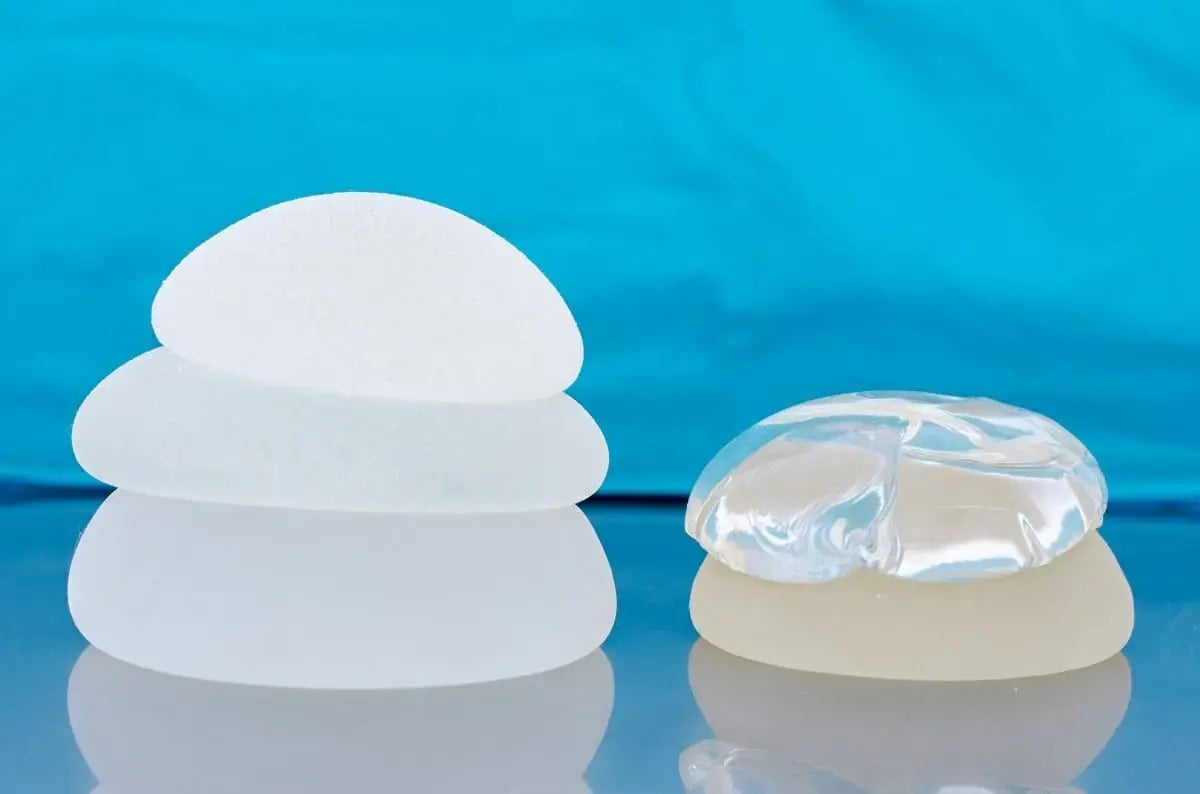
How Do You Prepare for Breast Implant Surgery?
Before your surgery, share your full health history with your plastic surgeon. They might need you to take medical tests to ensure you're healthy enough. Your surgeon will help you choose your implants, decide on placement (under or over the chest muscle), and pick the incision location.
To prepare, your surgeon will likely recommend:
- Not smoking for at least two weeks before surgery.
- Avoiding supplements that may cause bleeding.
- Asking someone to drive you home and help you for a few days.
For an easier recovery, get your medications ahead of time, and have ice packs, front-button tops, and easy-to-prepare food ready. Also, arrange childcare (and pet care) for the first week.
What Happens During Breast Implant Surgery?
Breast implant surgery usually takes about an hour and is done under general anesthesia or local anesthesia with sedation.
Here's what happens:
1. Incisions: Your surgeon makes incisions using one of these techniques:
- Inframammary: Short incisions under the breast crease, offering a clear view and lower risk of infection. Scars are hidden in the crease.
- Periareolar: Incisions around the areola's edge, blending with the skin tone. This can limit implant size and increase infection risk.
- Transaxillary: Incisions in the armpit using a camera. No breast scars, but higher bleeding risk.
- Transumbilical (TUBA): A belly button incision, only for saline implants. It is rarely used due to lack of precision.
2. Placement: The surgeon creates a pocket in the breast tissue and inserts the implants using a no-touch technique to minimize infection risk.
After placing the implants, the surgeon stitches the tissue and may use a long-lasting pain reliever. You'll go home with dressings and a supportive bra.
Where will your Breast Implants be Placed?
Surgeons can place breast implants either above or below the pectoral muscle, or under the fascia.
Above the Muscle (Subglandular)
- Pros: Less invasive with shorter recovery. May avoid a breast lift for mild sagging.
- Cons: Implants are more visible, especially in thin patients, and may look less natural. Can make mammograms harder to read and has a higher risk of capsular contracture.
Below the Muscle (Submuscular)
- Pros: Looks more natural and softer. Easier mammogram readings. Lower risk of capsular contracture.
- Cons: More invasive, longer recovery, and more pain. Can cause breast shape changes when muscles flex.
Under the Fascia (Subfascial)
- Pros: No animation deformity and very low capsular contracture rate.
- Cons: More invasive and less common, so not all surgeons offer it.
How is Breast Implant Recovery?
Recovery from breast implant surgery usually takes a day to a week, depending on the procedure and technique.
- Minimize Tissue Trauma: Some surgeons use techniques to reduce bleeding and tissue damage, which can help reduce pain and inflammation after surgery.
- Medication: Expect to feel swollen and sore. Your surgeon might prescribe pain meds, muscle relaxers, or sleep aids.
- Surgical Drains: These are usually removed 1-2 weeks after surgery.
- Activity Restrictions: Avoid strenuous activities and lifting more than 10 pounds for 2-12 weeks, depending on your healing.
- Showering and Exercises: Shower the day after surgery and start gentle arm and shoulder exercises.
- Supportive Bra: Wear a special bra for at least six weeks. Keep your incisions clean and dry to avoid infection.
- Scar Care: After healing, use silicone gel to reduce scarring and discoloration.
Following these guidelines will help you recover faster and avoid complications.
How Soon will You See Breast Implant Results?
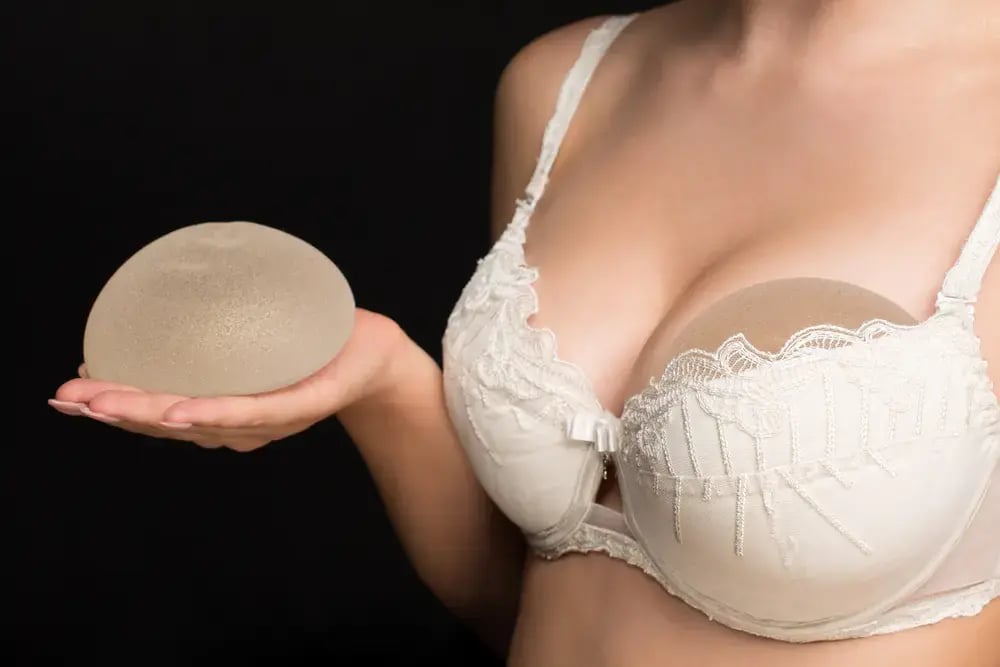
How Long Do Breast Implants Last?
Are Breast Implants Safe? What are the Health Risks?
Breast implant surgery carries some risks common to any major surgery, like reactions to anesthesia, bleeding, infection, and pain. However, there are also specific risks related to breast implants, such as capsular contracture, bottoming out, rippling, and rupture.
Changes in nipple sensation, breast pain, and a rare lymphoma called BIA-ALCL linked to textured implants are other concerns. Some patients report symptoms associated with breast implant illness, although it's not a recognized medical condition. Regular surveillance, including ultrasound or MRI for silicone implant ruptures, and mammograms for breast cancer screening, is crucial for breast health.
Do Breast Implants Cause Cancer?
Breast implants, especially those with a textured silicone shell, can potentially lead to breast implant-associated anaplastic large cell lymphoma (BIA-ALCL), rare cancer. Although the risk is considered low, with reported cases ranging from 1 in 3,817 to 1 in 30,000 patients, some believe these rates are underestimated.
Allergan recalled its Biocell textured implants due to their association with BIA-ALCL. To lower the risk, consider smooth or microtextured implants. Recently, the FDA warned about other cancers linked to breast implants, including breast implant-associated squamous cell carcinoma (BIA-SCC) and various lymphomas, although their causes and risks are not fully understood.
Can You Breastfeed with Implants?
In most cases, breastfeeding is still possible after getting breast implants, regardless of whether they are placed above or below the chest muscle. However, combining breast augmentation with nipple surgery may damage milk ducts, so it's advisable to wait until after breastfeeding for such procedures.
Pregnancy and weight fluctuations can also impact breast size and shape, so it's ideal to maintain a stable weight and avoid pregnancy within two years of breast surgery to preserve results.
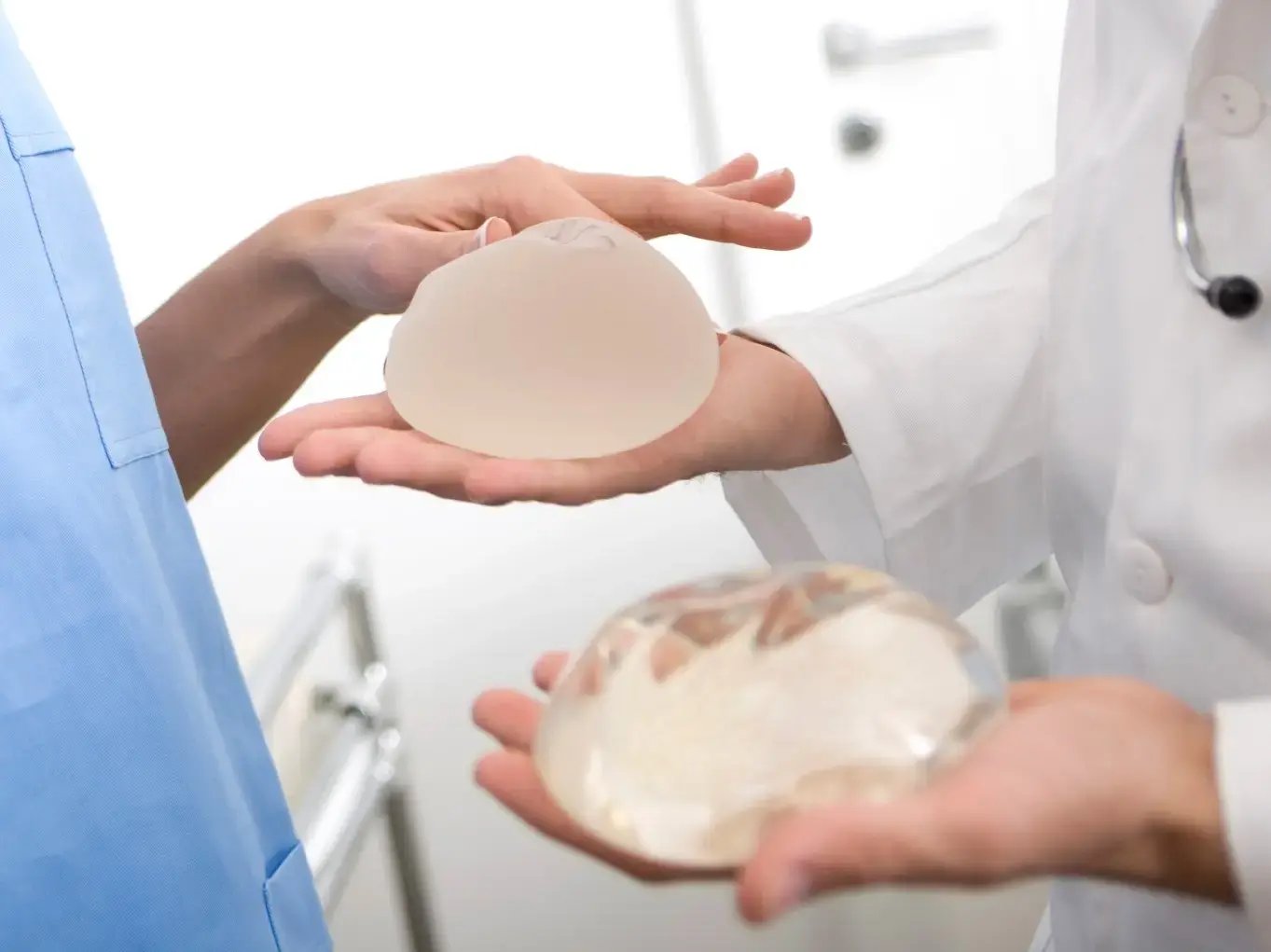
What are the Alternatives to Breast Implants?
Breast lifts are an option for reshaping sagging or uneven breasts caused by factors like aging, pregnancy, or weight loss.
Another alternative is fat transfer breast augmentation, which involves removing fat from areas like the hips or thighs via liposuction and transferring it to the breasts for enhancement. While this method uses your tissue for augmentation and offers body contouring benefits, it typically provides a more modest enhancement compared to implants, increasing breast size by one to two cup sizes. However, fat transfer can be pricier due to the additional liposuction step involved.
What are Breast Implants?
Breast implants are devices used to enhance the size and shape of breasts. They can be filled with saline or silicone gel. They are also used in breast reconstruction after mastectomy or lumpectomy. American doctors Thomas Cronin and Frank Gerow created the first silicone implants in 1961. The first woman to get these implants was Timmie Jean Lindsey in 1962.
While popular, breast implants have faced controversy due to health concerns. In 2017, the FDA linked textured implants to a rare lymphoma called BIA-ALCL. Despite this, implant technology has improved, offering more natural-looking and safer options in various sizes and shapes.
What are the Pros and Cons of Breast Implant Surgery?
Pros:
- Breast implants can make breasts larger, fuller, and more balanced.
- They can correct tuberous breasts or reconstruct breasts after a mastectomy.
- Implant size and shape can be customized for a natural look.
- The surgery has a high satisfaction rate, with 95% of women saying it's worth it.
- Many women feel more confident after getting implants.
Cons:
- There are safety concerns, and the FDA has issued warnings about risks.
- Complications like implant rupture, leakage, asymmetry, and capsular contracture may occur, sometimes needing revision surgery.
- Implants don't last a lifetime and will need to be replaced eventually. Regular check-ups are necessary.
Our mission is to create a world where every investment in modern beauty is Worth It.
Let's keep in touch
Get updates of the treatments you are interested
Types of Breast Implants: Choosing the Right One
During your consultation, your plastic surgeon will help you pick the right implant size and shape for your desired outcome. They’ll also explain the risks and benefits of different types of implants.
Silicone vs. Saline:1. Silicone Implants:
- Made with a silicone shell and interior.
- Highly cohesive silicone or "gummy bear" implants hold their shape better.
- Mimic the natural feel of breast tissue.
- Silicone shell filled with sterile saltwater.
- Can be pre-filled or filled during surgery.
- Typically less expensive and requires smaller incisions.
1. Smooth Implants:
- Have a slick surface and move freely in the breast tissue.
- Most common in the U.S.
- Have a rough surface that attaches to the tissue capsule.
- Less likely to move but linked to a rare cancer (BIA-ALCL).
1. Shape:
- Round implants give more upper fullness.
- Shaped implants look more natural but are more expensive.
- Measured in cubic centimeters (ccs).
- 125cc to 200cc usually increases breast size by one cup.
- Describes how far the implant extends from the chest wall.
- Available in low, moderate, and high profiles.
How Much Are Breast Implants?
The cost of breast implants varies. In the USA, prices start at $4800. In Turkey, it starts at $3500; in the UK, it starts at £5000.
The cost depends on several factors, including the type of implants, the surgeon’s experience, the surgery location, and the type of anesthesia used.
Since breast implants are considered elective cosmetic surgery, insurance usually does not cover the procedure.

How Do You Prepare for Breast Implant Surgery?
Before your surgery, share your full health history with your plastic surgeon. They might need you to take medical tests to ensure you're healthy enough. Your surgeon will help you choose your implants, decide on placement (under or over the chest muscle), and pick the incision location.
To prepare, your surgeon will likely recommend:
- Not smoking for at least two weeks before surgery.
- Avoiding supplements that may cause bleeding.
- Asking someone to drive you home and help you for a few days.
For an easier recovery, get your medications ahead of time, and have ice packs, front-button tops, and easy-to-prepare food ready. Also, arrange childcare (and pet care) for the first week.
What Happens During Breast Implant Surgery?
Breast implant surgery usually takes about an hour and is done under general anesthesia or local anesthesia with sedation.
Here's what happens:
1. Incisions: Your surgeon makes incisions using one of these techniques:
- Inframammary: Short incisions under the breast crease, offering a clear view and lower risk of infection. Scars are hidden in the crease.
- Periareolar: Incisions around the areola's edge, blending with the skin tone. This can limit implant size and increase infection risk.
- Transaxillary: Incisions in the armpit using a camera. No breast scars, but higher bleeding risk.
- Transumbilical (TUBA): A belly button incision, only for saline implants. It is rarely used due to lack of precision.
2. Placement: The surgeon creates a pocket in the breast tissue and inserts the implants using a no-touch technique to minimize infection risk.
After placing the implants, the surgeon stitches the tissue and may use a long-lasting pain reliever. You'll go home with dressings and a supportive bra.
Where will your Breast Implants be Placed?
Surgeons can place breast implants either above or below the pectoral muscle, or under the fascia.
Above the Muscle (Subglandular)
- Pros: Less invasive with shorter recovery. May avoid a breast lift for mild sagging.
- Cons: Implants are more visible, especially in thin patients, and may look less natural. Can make mammograms harder to read and has a higher risk of capsular contracture.
Below the Muscle (Submuscular)
- Pros: Looks more natural and softer. Easier mammogram readings. Lower risk of capsular contracture.
- Cons: More invasive, longer recovery, and more pain. Can cause breast shape changes when muscles flex.
Under the Fascia (Subfascial)
- Pros: No animation deformity and very low capsular contracture rate.
- Cons: More invasive and less common, so not all surgeons offer it.
How is Breast Implant Recovery?
Recovery from breast implant surgery usually takes a day to a week, depending on the procedure and technique.
- Minimize Tissue Trauma: Some surgeons use techniques to reduce bleeding and tissue damage, which can help reduce pain and inflammation after surgery.
- Medication: Expect to feel swollen and sore. Your surgeon might prescribe pain meds, muscle relaxers, or sleep aids.
- Surgical Drains: These are usually removed 1-2 weeks after surgery.
- Activity Restrictions: Avoid strenuous activities and lifting more than 10 pounds for 2-12 weeks, depending on your healing.
- Showering and Exercises: Shower the day after surgery and start gentle arm and shoulder exercises.
- Supportive Bra: Wear a special bra for at least six weeks. Keep your incisions clean and dry to avoid infection.
- Scar Care: After healing, use silicone gel to reduce scarring and discoloration.
Following these guidelines will help you recover faster and avoid complications.
How Soon will You See Breast Implant Results?

How Long Do Breast Implants Last?
Are Breast Implants Safe? What are the Health Risks?
Breast implant surgery carries some risks common to any major surgery, like reactions to anesthesia, bleeding, infection, and pain. However, there are also specific risks related to breast implants, such as capsular contracture, bottoming out, rippling, and rupture.
Changes in nipple sensation, breast pain, and a rare lymphoma called BIA-ALCL linked to textured implants are other concerns. Some patients report symptoms associated with breast implant illness, although it's not a recognized medical condition. Regular surveillance, including ultrasound or MRI for silicone implant ruptures, and mammograms for breast cancer screening, is crucial for breast health.
Do Breast Implants Cause Cancer?
Breast implants, especially those with a textured silicone shell, can potentially lead to breast implant-associated anaplastic large cell lymphoma (BIA-ALCL), rare cancer. Although the risk is considered low, with reported cases ranging from 1 in 3,817 to 1 in 30,000 patients, some believe these rates are underestimated.
Allergan recalled its Biocell textured implants due to their association with BIA-ALCL. To lower the risk, consider smooth or microtextured implants. Recently, the FDA warned about other cancers linked to breast implants, including breast implant-associated squamous cell carcinoma (BIA-SCC) and various lymphomas, although their causes and risks are not fully understood.
Can You Breastfeed with Implants?
In most cases, breastfeeding is still possible after getting breast implants, regardless of whether they are placed above or below the chest muscle. However, combining breast augmentation with nipple surgery may damage milk ducts, so it's advisable to wait until after breastfeeding for such procedures.
Pregnancy and weight fluctuations can also impact breast size and shape, so it's ideal to maintain a stable weight and avoid pregnancy within two years of breast surgery to preserve results.

What are the Alternatives to Breast Implants?
Breast lifts are an option for reshaping sagging or uneven breasts caused by factors like aging, pregnancy, or weight loss.
Another alternative is fat transfer breast augmentation, which involves removing fat from areas like the hips or thighs via liposuction and transferring it to the breasts for enhancement. While this method uses your tissue for augmentation and offers body contouring benefits, it typically provides a more modest enhancement compared to implants, increasing breast size by one to two cup sizes. However, fat transfer can be pricier due to the additional liposuction step involved.
Related Treatments
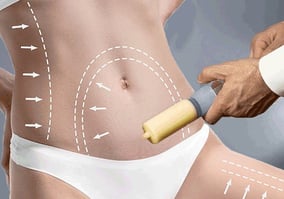
Invisalling
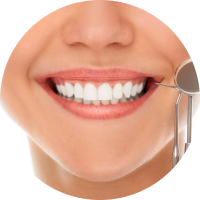
Dental Implants

Teeth Whitening

Loremipsum

Invisalling

Dental Implants

Teeth Whitening








